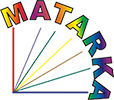About the Journal
Nyelvtudományi Közlemények [Linguistic Bulletins] is the oldest extant Hungarian linguistics journal; even in the international context, there are hardly any periodicals on linguistics that go back to a longer history. It was established in 1862 by the Committee of Linguistics of the Hungarian Academy of Sciences, with the aim of creating an appropriate publication forum for the increasingly lively scholarly community of this country. Its immediate predecessor was the journal Magyar Nyelvészet [Hungarian Linguistics], established in 1855, whose founding editor, Pál Hunfalvy, became the first editor of Nyelvtudományi Közlemények, too. The range of topics that Hunfalvy sketched in the inaugural article of Magyar Nyelvészet (What are the Intentions of Magyar Nyelvészet?) have remained key components of the profile of the journal to this very day, albeit with smaller or larger modifications; the latter are partly due to the subsequent appearance of more specialised linguistics journals, each becoming a major forum of the given range of issues, and partly to changes in approach and methodology that the past one and a half centuries saw within linguistics as a whole.
This journal publishes papers and book reviews primarily on the following topics:
-
theoretical, descriptive and historical study of Hungarian and other Uralic languages
-
the study of languages in contact with Uralic ones, with special regard to Turkic languages
-
theoretical, descriptive and historical study of minority languages of Hungary
-
historical-comparative linguistics
-
language typology
-
the history of linguistics
Nyelvtudományi Közlemények accepts manuscripts that have not been previously published, and are not simultaneously submitted to other periodicals; in the case of major papers, a further prerequisite is that they contain original research results of the author(s) in a predominant part of their total length. Republication of a paper can only be considered if the given paper or review was published earlier in a foreign language and the author can bring up convincing arguments that support its republication in Hungarian, and if furthermore the manuscript is adjusted to the formal and substantial requirements of Nyelvtudományi Közlemények. The primary language of publication is Hungarian, but papers or book reviews can also be published in English, German, or Russian; each paper includes an abstract in English.
Authors retain the copyright to their articles. Nyelvtudományi Közlemények is an open access journal, publications can be freely downloaded and redistrubute under a Creative Commons Attribution License (4.0 BY-NC).







